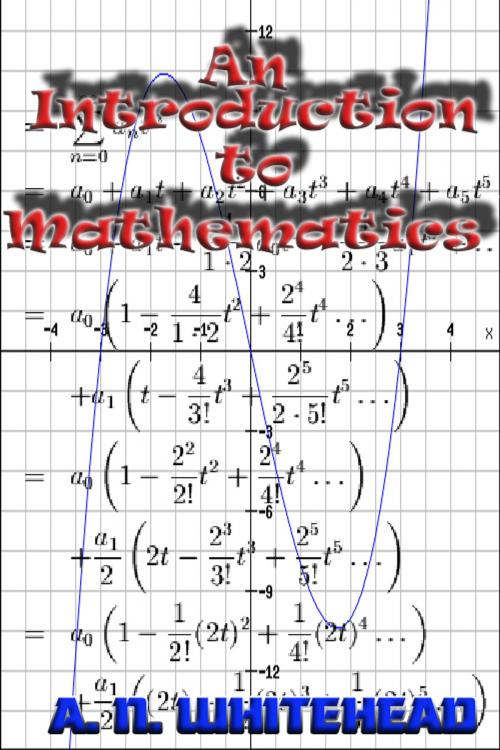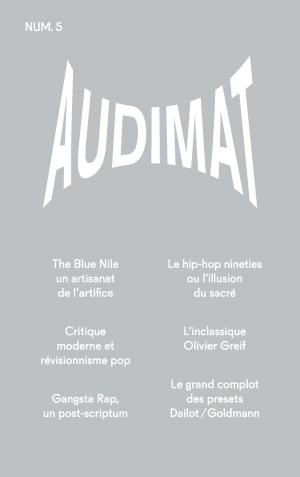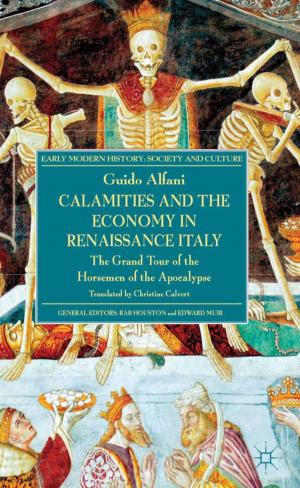An Introduction to Mathematics (Illustrated - Full Mathematical Notation)
Nonfiction, Science & Nature, Mathematics, Calculus, History| Author: | A.N. Whitehead | ISBN: | 1230000118395 |
| Publisher: | Alfred North Whitehead | Publication: | March 31, 2013 |
| Imprint: | Language: | English |
| Author: | A.N. Whitehead |
| ISBN: | 1230000118395 |
| Publisher: | Alfred North Whitehead |
| Publication: | March 31, 2013 |
| Imprint: | |
| Language: | English |
THE ABSTRACT NATURE OF MATHEMATICS
The study of mathematics is apt to commence in disappointment. The important applications of the science, the theoretical interest of its ideas, and the logical rigor of its methods, all generate the expectation of a speedy introduction to processes of interest. We are told that by its aid the stars are weighed and the billions of molecules in a drop of water are counted. Yet, like the ghost of Hamlet's father, this great science eludes the efforts of our mental weapons to grasp it 'Tis here 'tis there, 'tis gone" and what we do see does not suggest the same excuse for illusiveness as sufficed for the ghost, that it is too noble for our gross methods.
A show of violence," if ever excusable, may surely be offered" to the trivial results which occupy the pages of some elementary mathematical treatises. The reason for this failure of the science to live up to its reputation is that its fundamental ideas are not explained to the student disentangled from the technical procedure which has been invented to facilitate their exact presentation in particular instances. Accordingly, the unfortunate learner finds himself struggling to acquire the knowledge of a mass of details which are not illuminated by any general conception.
Without a doubt, technical facility is a first requisite for valuable mental activity: we shall fail to appreciate the rhythm of Milton, or the passion of Shelley, so long as we find it necessary to spell the words and are not quite certain of the forms of the individual letters. In this sense there is no royal road to learning. But it is equally an error to confine attention to technical processes, excluding consideration of general ideas.
The object of the following Chapters is not to teach mathematics, but to enable students from the very beginning of their course to know what the science is about, and why it is necessarily the foundation of exact thought as applied to natural phenomena. All allusion in what follows to detailed deductions in any part of the science will be inserted merely for the purpose of example, and care will be taken to make the general argument comprehensible, even if here and there some technical process or symbol which the reader does not understand is cited for the purpose of illustration.
The first acquaintance which most people have with mathematics is through arithmetic. That two and two make four is usually taken as the type of a simple mathematical proposition which everyone will have heard of. Arithmetic, therefore, will be a good subject to consider in order to discover, if possible, the most obvious characteristic of the science. Now, the first noticeable fact about arithmetic is that it applies to everything, to tastes and to sounds, to the ideas of the mind and to the bones of the body. The nature of the things is perfectly indifferent, of all things it is true that two and two make four. Thus we write down as the leading characteristic of mathematics that it deals with properties and ideas which are applicable to things just because they are things, and apart from any particular feelings, or emotions, or sensations, in any way connected with them. This is what is meant by calling mathematics an abstract science.
This point has usually been misunderstood, from being thought of in too narrow a way. Pythagoras had a glimpse of it when he proclaimed that number was the source of all things. In modern times the belief that the ultimate explanation of all things was to be found in Newtonian mechanics was an adumbration of the truth that all science as it grows towards perfection becomes mathematical in its ideas.
The chapters contain:
THE ABSTRACT NATURE OF MATHEMATICS
VARIABLE
METHODS OF APPLICATION
DYNAMICS
THE SYMBOLISM OF MATHEMATICS
GENERALIZATIONS OF NUMBER
IMAGINARY NUMBERS
IMAGINARY NUMBERS (CONTINUED)
COORDINATEGEOMETRY
CONICSECTIONS
FUNCTIONS
PERIODICITY IN NATURE
TRIGONOMETRY
SERIES
THE DIFFERENTIAL CALCULUS
GEOMETRY
QUANTITY
THE ABSTRACT NATURE OF MATHEMATICS
The study of mathematics is apt to commence in disappointment. The important applications of the science, the theoretical interest of its ideas, and the logical rigor of its methods, all generate the expectation of a speedy introduction to processes of interest. We are told that by its aid the stars are weighed and the billions of molecules in a drop of water are counted. Yet, like the ghost of Hamlet's father, this great science eludes the efforts of our mental weapons to grasp it 'Tis here 'tis there, 'tis gone" and what we do see does not suggest the same excuse for illusiveness as sufficed for the ghost, that it is too noble for our gross methods.
A show of violence," if ever excusable, may surely be offered" to the trivial results which occupy the pages of some elementary mathematical treatises. The reason for this failure of the science to live up to its reputation is that its fundamental ideas are not explained to the student disentangled from the technical procedure which has been invented to facilitate their exact presentation in particular instances. Accordingly, the unfortunate learner finds himself struggling to acquire the knowledge of a mass of details which are not illuminated by any general conception.
Without a doubt, technical facility is a first requisite for valuable mental activity: we shall fail to appreciate the rhythm of Milton, or the passion of Shelley, so long as we find it necessary to spell the words and are not quite certain of the forms of the individual letters. In this sense there is no royal road to learning. But it is equally an error to confine attention to technical processes, excluding consideration of general ideas.
The object of the following Chapters is not to teach mathematics, but to enable students from the very beginning of their course to know what the science is about, and why it is necessarily the foundation of exact thought as applied to natural phenomena. All allusion in what follows to detailed deductions in any part of the science will be inserted merely for the purpose of example, and care will be taken to make the general argument comprehensible, even if here and there some technical process or symbol which the reader does not understand is cited for the purpose of illustration.
The first acquaintance which most people have with mathematics is through arithmetic. That two and two make four is usually taken as the type of a simple mathematical proposition which everyone will have heard of. Arithmetic, therefore, will be a good subject to consider in order to discover, if possible, the most obvious characteristic of the science. Now, the first noticeable fact about arithmetic is that it applies to everything, to tastes and to sounds, to the ideas of the mind and to the bones of the body. The nature of the things is perfectly indifferent, of all things it is true that two and two make four. Thus we write down as the leading characteristic of mathematics that it deals with properties and ideas which are applicable to things just because they are things, and apart from any particular feelings, or emotions, or sensations, in any way connected with them. This is what is meant by calling mathematics an abstract science.
This point has usually been misunderstood, from being thought of in too narrow a way. Pythagoras had a glimpse of it when he proclaimed that number was the source of all things. In modern times the belief that the ultimate explanation of all things was to be found in Newtonian mechanics was an adumbration of the truth that all science as it grows towards perfection becomes mathematical in its ideas.
The chapters contain:
THE ABSTRACT NATURE OF MATHEMATICS
VARIABLE
METHODS OF APPLICATION
DYNAMICS
THE SYMBOLISM OF MATHEMATICS
GENERALIZATIONS OF NUMBER
IMAGINARY NUMBERS
IMAGINARY NUMBERS (CONTINUED)
COORDINATEGEOMETRY
CONICSECTIONS
FUNCTIONS
PERIODICITY IN NATURE
TRIGONOMETRY
SERIES
THE DIFFERENTIAL CALCULUS
GEOMETRY
QUANTITY















